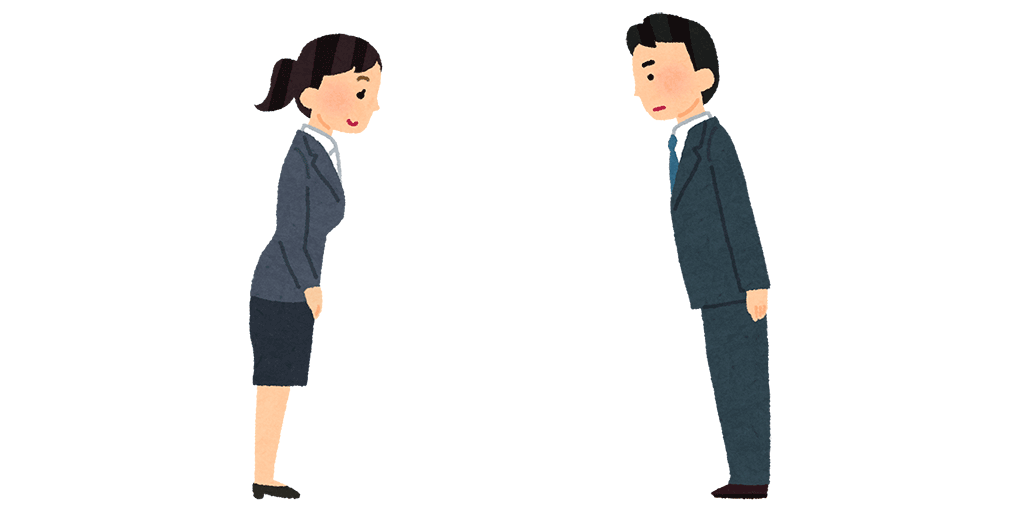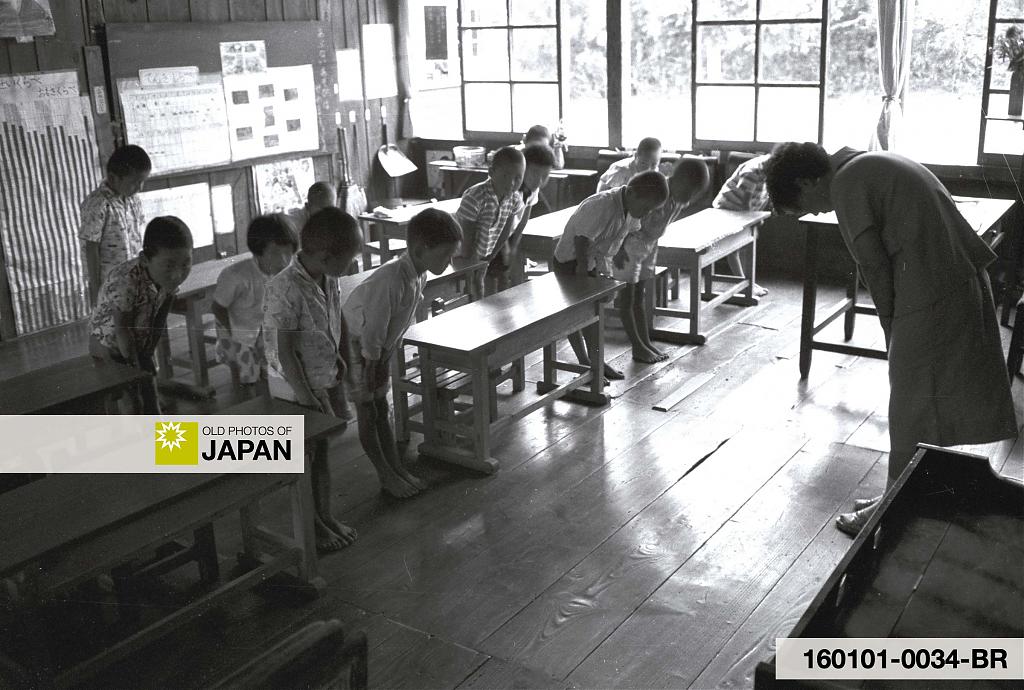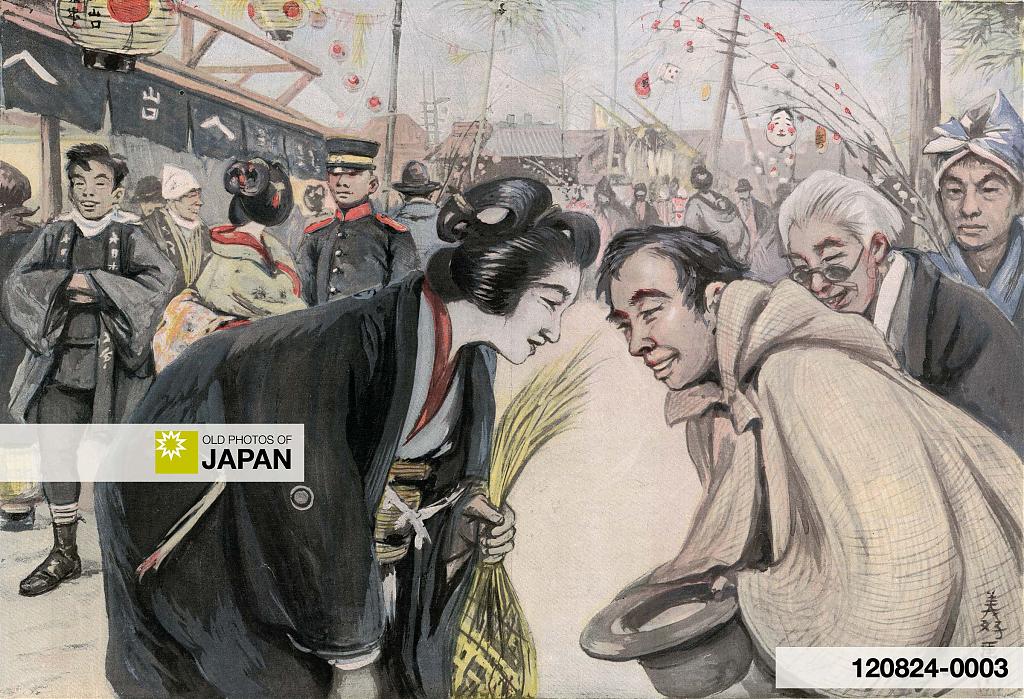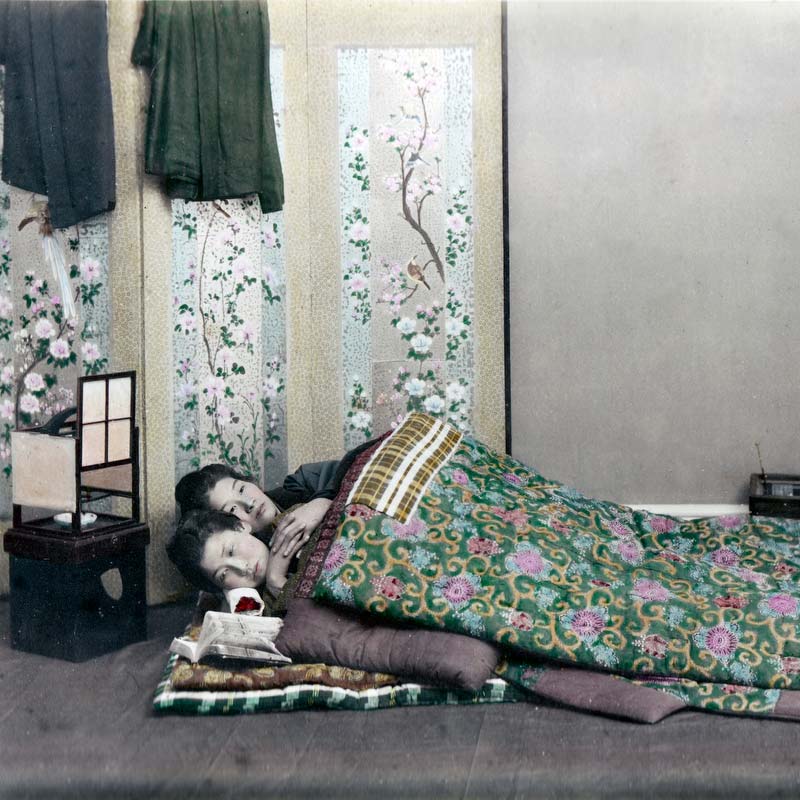This dramatized studio photograph shows two Japanese women greeting each other while seated on zabuton (座布団) cushions. Can you take a bow the Japanese way? Read on to learn how.
The two women perform a senrei (浅礼) bow by placing their hands on the floor in front of them. This bow usually involves a 30° bow. Usually, the gaze is directed at the floor, but the photographer may have wanted to show the models’ faces.
Notice the present in between the two women.
Bowing probably entered Japan with the ‘official’ introduction of Buddhism sometime during the Asuka (538 to 710) and Nara periods (710–794). At that time, bowing was a reflection of status. But over the centuries it became an integral part of daily life, expressing respect, appreciation or apologies.
There are sitting and standing bows, and different bows for different occasions. Basically, the standing bows shown below can also be performed while sitting on the floor in a traditional Japanese manner. However, never while sitting on a chair.

Types of bows
There are four main bows, ranging from 15 degrees to the nose almost touching the floor:
Eshaku (会釈) – 15°
A bow performed with people of equal business or social rank.


Keirei (敬礼) – 30~45°
Used with higher-ranking people, or people you must give extra respect, like in-laws or teachers. Also known as futsuurei (普通礼).


Saikeirei (最敬礼) – 45~70°
This bow shows especially deep respect or regret. During the Edo Period (1603~1868), servants would perform this bow for their feudal daimyou lords.


Dogeza (土下座)

This is the deepest bow. It is a seated bow with the forehead virtually (or actually) on the floor. This is especially performed when the person has done something deeply disgraceful. These days you see this bow mainly in movies and TV series.
It is occasionally also performed by company directors or government officials when faulty products or negligence have resulted in deaths or disease, or by people asking for extremely special favors.
Old photos suggest this bow was also often used as a regular greeting.

Notes
1 Illustrations courtesy of Irasutoya
Published
Updated
Reader Supported
Old Photos of Japan aims to be your personal museum for Japan's visual heritage and to bring the experiences of everyday life in old Japan to you.
To enhance our understanding of Japanese culture and society I track down, acquire, archive, and research images of everyday life, and give them context.
I share what I have found for free on this site, without ads or selling your data.
Your support helps me to continue doing so, and ensures that this exceptional visual heritage will not be lost and forgotten.
Thank you,
Kjeld Duits
Reference for Citations
Duits, Kjeld (). 1890s: The Fine Art of the Japanese Bow, OLD PHOTOS of JAPAN. Retrieved on December 12, 2025 (GMT) from https://www.oldphotosjapan.com/photos/714/two-japanese-women-greeting




There are currently no comments on this article.